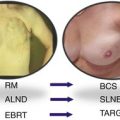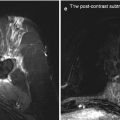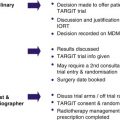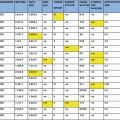Fig. 10.1
Examples of assessment using BCCT.core
Although patient-reported outcome measures are increasingly used and quality of life is a key measure of clinical effectiveness, the measures used fall short of those required for evidence-based medicine. A review of 227 outcome studies for aesthetic and reconstructive breast surgery found only one study that was validated, specific and reproducible (Pusic et al. 2007). The use of objective measurement of the patient’s perception and expectations is needed to assist in the development of accurate predictive tools to better enable clinicians and patients to choose the optimal treatment.
10.5 Experience from the TARGIT-A Trial
Data from 114 women over 50 years old participating in the TARGIT-A Trial (ISRCTN34086741) from one centre (Perth, Australia) were analysed. Frontal view digital photographs were assessed, blind to treatment, using BCCT.core. Data on patient and tumour characteristics were obtained from hospital notes. Statistical analysis was by generalised estimating equations on all data, and logistic regression analysis at year 1 only.
Photographs were taken at baseline (before surgery) and 1, 2, 3 and 4 years after initial breast-conserving surgery; none of the 114 patients had subsequent breast surgery. Median age at randomisation was 62 years (IQR 56–68). The composite scores were dichotomised into excellent and good (EG), and fair and poor (FP). There was a non-significant 45 % increase in the odds of having an outcome of EG for patients in the TARGIT group relative to the external beam radiotherapy (EBRT) group (OR = 1.45, 95%CI 0.78–2.69, p = 0.245) after adjusting for tumour size. The results were similar when adjusted for tumour grade and age of the patient. For year 1 there was a statistically significant 2.35-fold increase in the odds of having an outcome of EG for patients in the TARGIT group relative to the EBRT group (OR = 2.35, 95%CI 1.02–5.45, p = 0.047) after adjusting for age of the patient, tumour size and grade.
These results showed a significantly better cosmetic outcome with TARGIT compared to EBRT in the first year after surgery (Fig. 10.2) (Keshtgar et al. 2011).
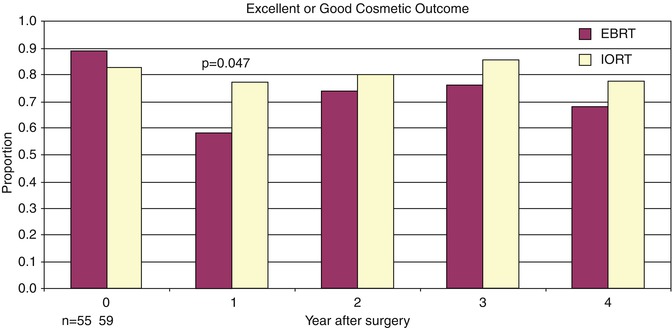

Fig. 10.2
Results from patients in the TARGIT trial
There are few published studies on the measurement of cosmesis after IORT. In the MSKCC Series (Sacchini et al. 2008), where quadrant IORT of 18–20 Gy was given, the cosmetic outcome was acceptable. In the Montpellier phase II trial (Lemanski et al. 2010) IORT was given as electrons (21 Gy). At a median follow-up of 30 months of 94 patients, all showed excellent or good cosmesis. In a study of IORT using Axxent, a balloon-based electronic brachytherapy (20 Gy), a median follow-up of 12 months of 11 patients showed excellent cosmesis in 10 (Ivanov et al. 2011).
10.6 Why Is TARGIT Better?
A more detailed analysis of the data provided by BCCT.core was used to measure the corresponding change in skin appearance in the treatment area. The colour histograms of the treated and untreated breasts were recorded in the CIE L*a*b* colour space. Like the more common RGB (red, green, blue) colour space, CIE L*a*b* is also a three-channel colour space, but more perceptually uniform. L* is the lightness, a* is the redness or greenness, and b* is yellowness or blueness. The histogram was computed for each channel individually (one-dimensional histograms) and over the complete colour space (3D histogram). The dissimilarity between corresponding histogram signatures of the two breasts were compared with the chi square statistic and Earth Mover’s Distance (EMD) (Cardoso and Cardoso 2007). A significant change in skin appearance when measured in the a* channel, both with the chi square statistic and EMD, was observed, with higher values in the EBRT group. The effectiveness of the a* channel in capturing skin colour changes due to radiotherapy in BCCT has already been reported (Oliveira et al. 2010). Higher dissimilarity values in the a* channel correspond to higher changes in the redness/greenness of the skin. Therefore it seems that most of the difference between the TARGIT and EBRT groups was due to a reddening of the skin after EBRT.
Stay updated, free articles. Join our Telegram channel

Full access? Get Clinical Tree


